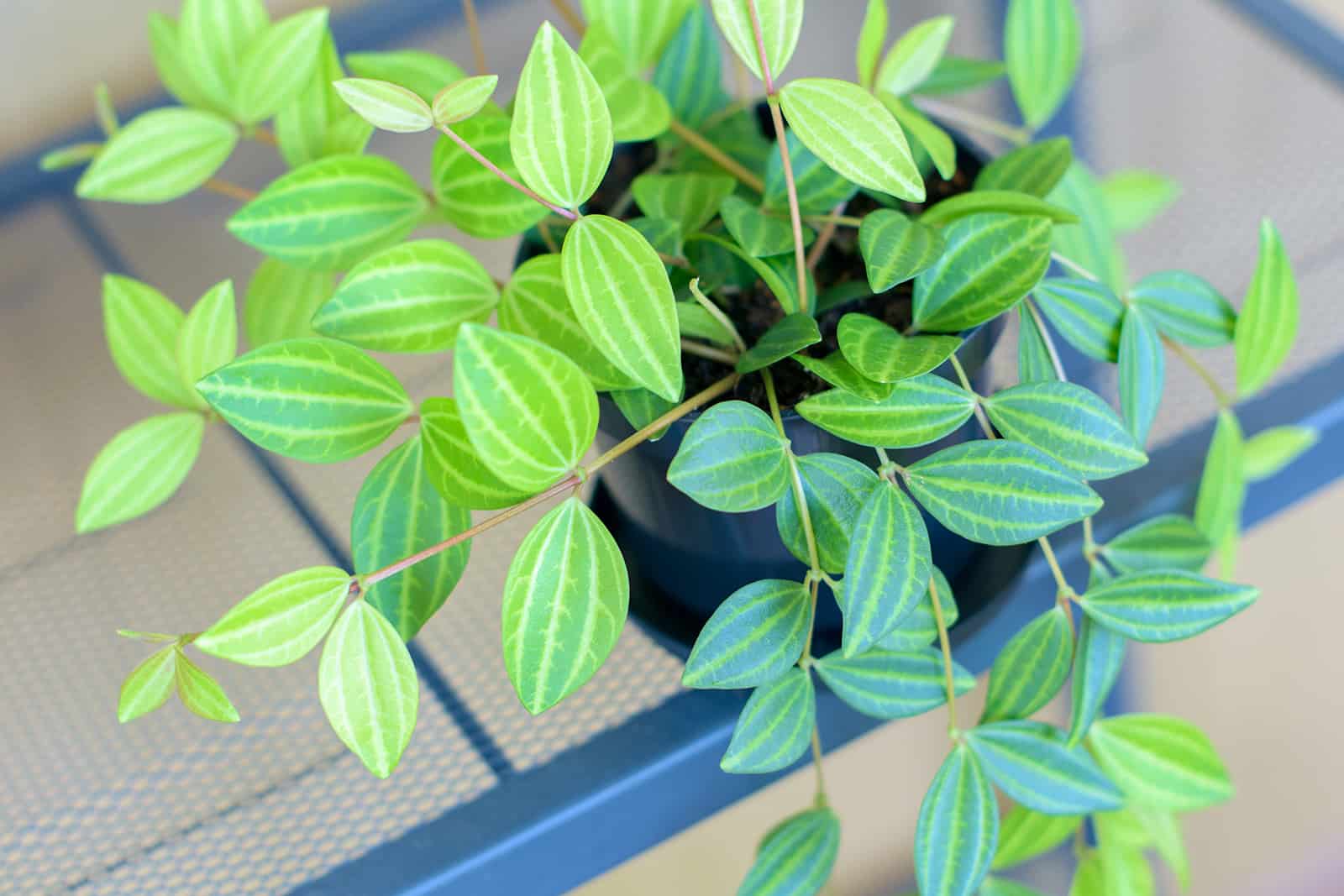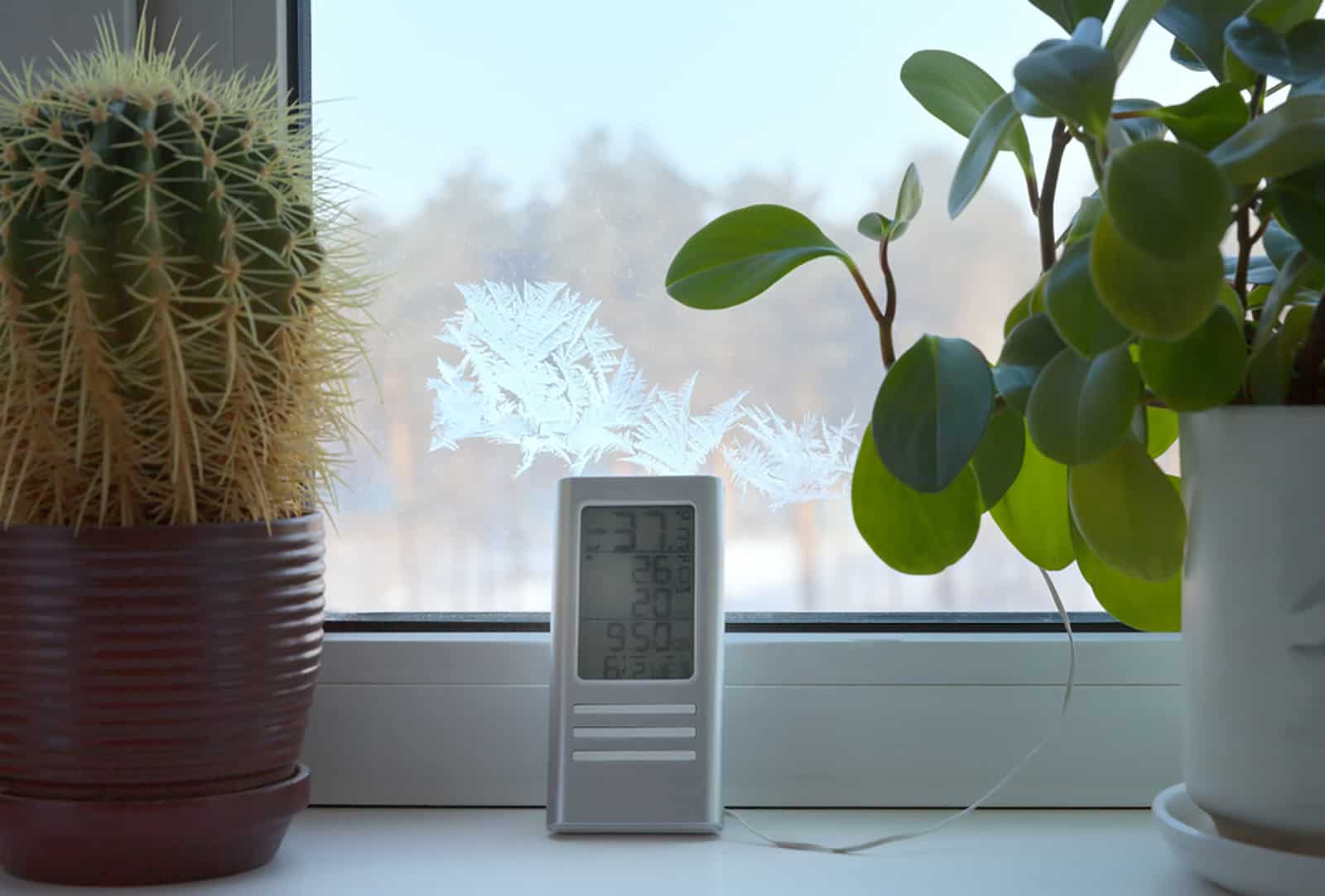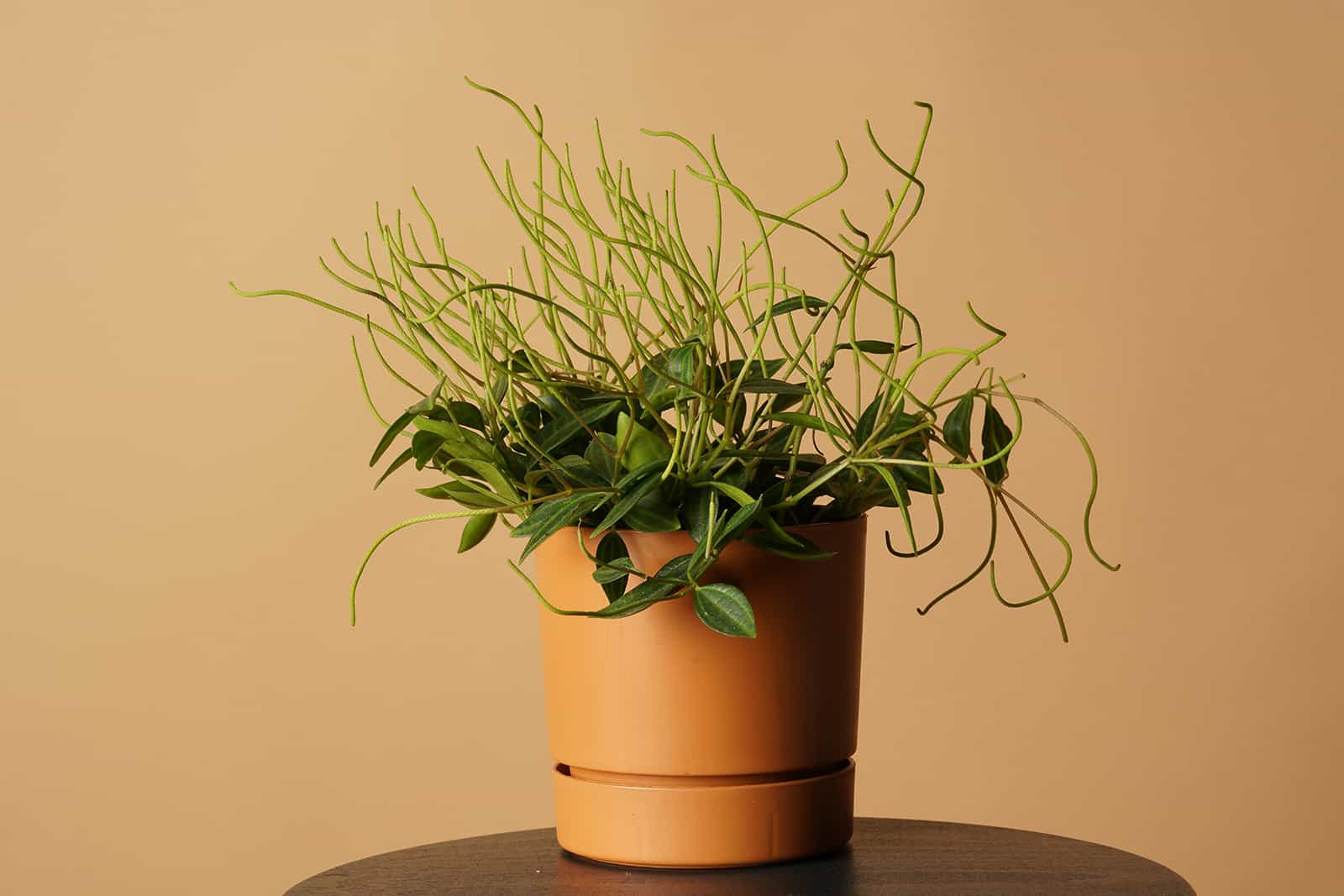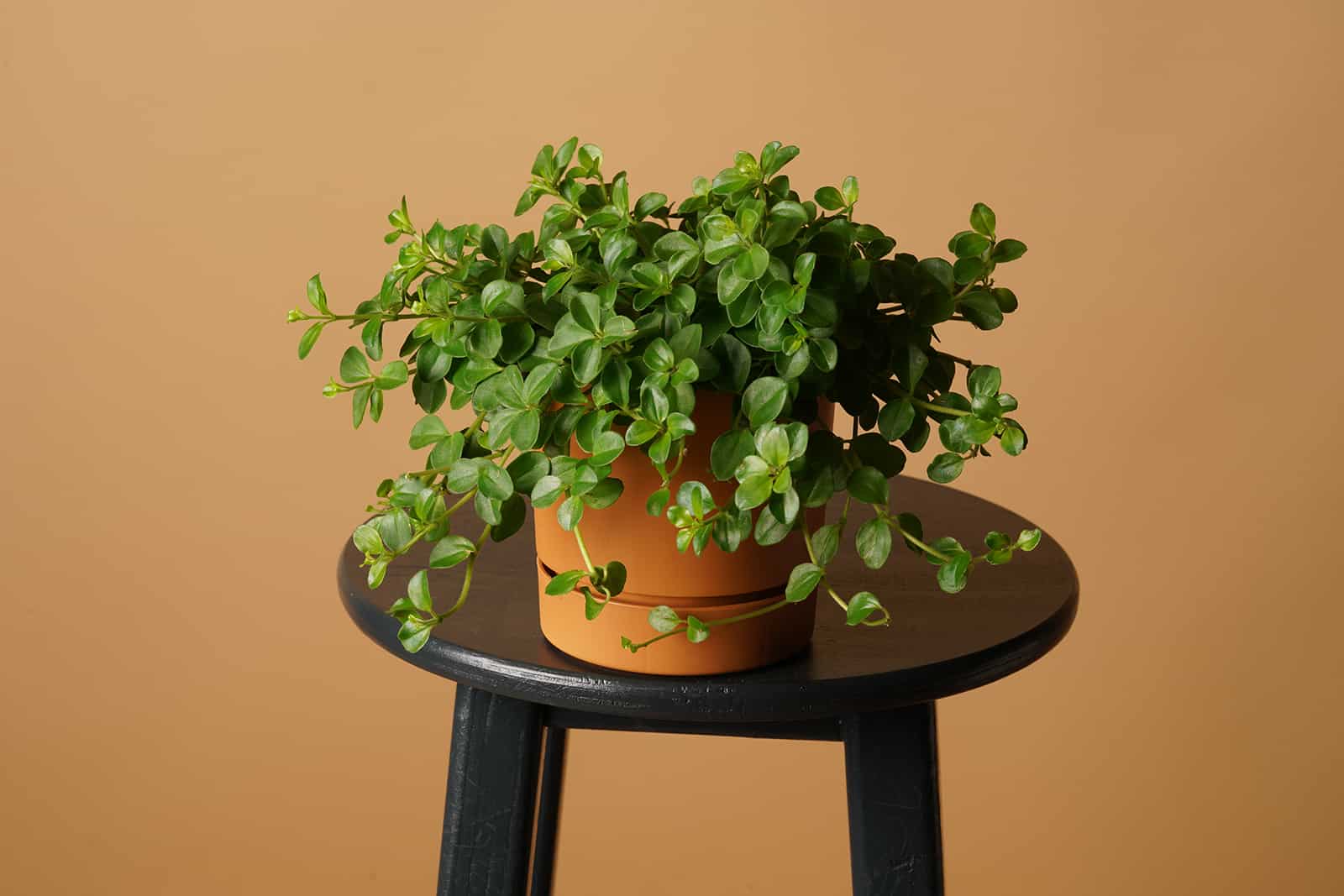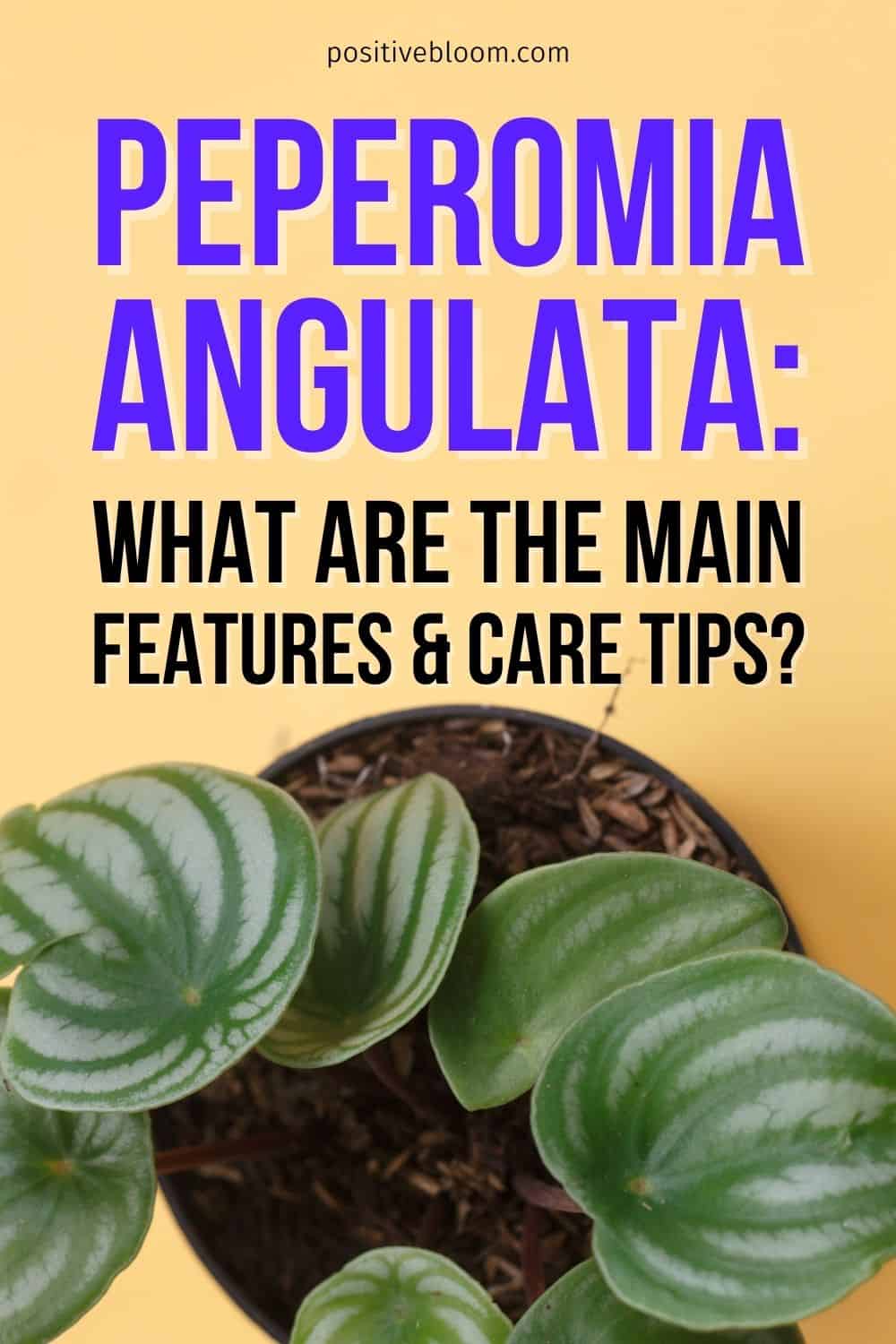There are many different peperomia species, and our favorites are the Peperomia caperata, Peperomia obtusifolia, Peperomia polybotrya, and Peperomia argyreia. However, nothing trumps the Peperomia angulata.
It is a great climbing plant, perfect for any home design, modern or rustic.
Put it in a hanging basket or a pot, and it will light up any room; you will love having coffee in the morning, glancing at the fantastic foliage, and your friends won’t be able to look away when they come and visit.
But enough of that; let’s look into some general specifics:
[table id=87 /]This article brings you a detailed care guide for growing this peperomia plant, and you will also find some fascinating facts about this slow-growing plant.
Let’s get started!
The Peperomia Angulata Care Guide
Plant care for a Beetle peperomia is pretty straightforward: it needs indirect sunlight, a bit of water, and a well-draining soil mix for healthy growth.
However, you will want to know the details of its care if you want to have an amazing houseplant.
Peperomia plants are usually low-maintenance, so this care guide isn’t extensive.
Let’s take a look!
Light
The Peperomia angulata, or Radiator plant, enjoys indirect light. It is native to the Amazon region, meaning it got used to having trees protecting it from direct sunlight.
Thankfully, we don’t have to grow trees in our homes to create a perfect environment for this plant.
It loves medium light but can tolerate low-light conditions. However, the lack of bright light is shown in its foliage, which loses its deep shade of green, and its growth will be slowed down.
You can keep it in any room that gets plenty of sunlight; just be sure to move it a few feet away from the windows so that the hot afternoon sunlight doesn’t hurt its delicate foliage.
Using the trial and error method, we have come to the conclusion that the best place to put this peperomia is in an east- or west-facing room.
These rooms provide perfect light conditions so that the plant’s growth is as fast as possible, and the foliage is hypnotizingly green.
Water & Humidity
The Beetle peperomia is a semi-succulent, which means it doesn’t need to be frequently watered.
It is drought-tolerant, so you only need to water it when the soil has almost entirely dried out.
However, you should water this plant even less in winter because it won’t be able to use lots of water when it enters dormancy.
Therefore, if you want to avoid overwatering, regularly check the soil and water the plant only if it needs it.
Humidity
A peperomia is only partly succulent. The other part loves the tropical climate and high humidity levels.
This plant will survive in the average household’s humidity, but it loves higher humidity levels, so you should consider raising the humidity around your plant.
You can increase the humidity by misting the leaves once in a while or using the pebble tray method. However, misting is risky because if your plant’s foliage remains wet for a long time, it can get a fungal disease such as a leaf spot.
Assembling a pebble tray might be a bother to some people, or they just don’t like the way it looks with their home decor, so we bring you another way of raising the humidity level in your home: a humidifier.
Humidifiers are inexpensive gadgets that increase the humidity of your room without endangering your plant, and compact varieties are inconspicuous so that they won’t mar your room decor.
But you can always keep your plant in a terrarium or bathroom and avoid any additional work or investment.
Temperature
When we say that this plant is native to the tropics, it goes without saying that it loves warm temperatures.
It thrives in room temperatures between 65-75 °F (18-24 °C), but it can survive temperatures as low as 50 °F (10 °C) for a short period.
However, prolonged exposure to extreme temperatures may result in stunted growth and leaf drop.
You should avoid drafts and sudden temperature swings because these are all stressors that may harm your plant.
Soil & Fertilizer
The Peperomia angulata is an epiphyte, which means it grows on trees in its natural habitat. Therefore, it feeds on the nutrients it finds in plant debris, rain, and air.
When we grow this peperomia, we have to mirror these conditions as much as possible, which means planting this plant in a well-aerated soil, rich in nutrients.
The soil needs to be well-draining, so you can add perlite or coir to your favorite potting mix if you don’t have succulent soil mix at hand. You should also add compost as it enriches the soil with nutrients and peat moss which helps with moisture retention.
Fertilizer
The Beetle peperomia responds well to monthly fertilization. However, you should not overdo it!
It prefers well-balanced, general-purpose fertilizers such as triple 10. Use a liquid fertilizer and dilute it to half-strength to reduce the risk of over-fertilization.
Also, fertilize this plant only during its growing season. It enters dormancy in fall and winter, so you should stop with the fertilization or at least reduce it to once every two months during these seasons.
Repotting
The radiator plant is a slow grower with a shallow root system, which means it doesn’t have to be repotted very often, perhaps once every 3-4 years.
However, if you notice roots coming out of the drainage holes, you should repot the plant into a pot one size larger.
The best time to repot this peperomia plant is at the beginning of its growing season so that it has plenty of time to adjust to the new soil before dormancy, and because this is the time when it’s actively growing.
Propagation
There are 3 ways to propagate a Beetle peperomia: propagation from either stem cuttings or leaf cuttings, and propagation by division.
Propagations by stem and leaf cuttings are the easier methods that almost always work, and in this section, we’ll concentrate on them.
Propagation By Stem Cuttings
If you learn this method, you won’t find yourself with another Peperomia angulata at the checkout.
You can propagate the stem cuttings in water or soil, but bear in mind that propagating in water is much faster.
You need to pick a healthy stem with many leaves and cut it just above the leaf node in both cases.
The next step is different, and you can choose whether to put your plant in a jar of water or a pot filled with fresh, well-draining soil.
If you choose the propagation in water method, you should remove the foliage that is completely under water because it will only rot and contaminate the water.
You also need to change the water every other day, and once you notice the roots developing, you need to replant your peperomia in fresh soil.
If you’re propagating in soil, you only need to ensure that the soil is moist so that the roots may acclimate to the new home and keep the pot where the plant can get plenty of indirect sunlight.
Propagation By Leaf Cuttings
Propagation by leaf cuttings is equally successful, and you just need to cut off a healthy leaf with a petiole about 1 inch (2 cm) long.
Let the wound heal, and then dip it in a rooting hormone before you plant it in a fresh mix. If you’re propagating more than one leaf, separate them by at least 4 inches (10 cm) from one another.
Keep the soil moist and once you notice the new growth, repot the new plant.
Don’t think we forgot! Here’s a video to help you propagate your angulata plant.
Pruning & Cleaning
Pruning this peperomia plant is as important as meeting its other requirements. You need to cut off any diseases or scorched leaves, not just for the aesthetics but also for its overall health.
Pruning also allows you to maintain its shape, and it will grow bushier.
But whatever the reason for pruning, always remember to use sterilized shears when pruning or taking cuttings because you don’t want to transfer any bacteria to your plant that may prove to be fatal.
More About The Peperomia Angulata Plant
In the following section, you will learn some things about the Beetle peperomia that don’t have much to do with its care guide but are nevertheless essential.
You will learn some of its backgrounds, how its flower and foliage look, and some of the main issues affecting this plant.
All this may help you decide to opt for this plant, and if any problems arise, we’ve got you covered.
Background
The Peperomia angulata has many different names. Its other scientific name is Peperomia quadrangularis, but its common names are more widely known: The Radiator plant and the Beetle Peperomia.
It was found growing on trees in the Amazon in South America, and from there, it was taken to homes all around the world.
Even though its native habitat is bound to tropical southern America, it is not rare, and you can buy it for less than $25.
Flowers & Foliage
The foliage is the angulata’s most prominent feature. Fleshy, dark green leaves are striped with lines of light green, almost yellow.
The oval foliage sometimes hides the inconspicuous long and thin flowers, but they aren’t even worth mentioning when we think of the enchanting leaves.
Also, this trailing variety needs a friend, and no one’s better than the Peperomia scandens variegata, another trailing species only this one has variegated leaves and can highlight the dark greenery of your angulata.
Common Issues
In the following section, you can read about the most common issues you will encounter when growing the Radiator plant.
You will learn how to treat and also prevent these issues in the first place.
Pests
The Beetle peperomia is resistant to pests, but spider mites, mealybugs, and aphids may still find their way to your plant.
These pests like to attack unhealthy plants, so if you want to prevent these nuisances from ever terrorizing your plant, you need to take good care of it.
However, if they infest your plant, you should first separate the infested plant from the healthy ones so that the infestation doesn’t spread.
After isolating the plant, you need to remove the pests. You can wash them off with a strong water spray or remove them with a cotton pad dipped in rubbing alcohol.
But, if the infestation is larger than just a few bugs, you should consider spraying them with neem oil or insecticidal soaps.
Diseases
The most common disease that attacks this peperomia plant is root rot, caused by overwatering.
Wilting and drooping, discolored foliage is a sign that your peperomia might be suffering from root rot. In this case, the only thing that can help you is repotting and removing the mushy roots.
Leaf spot is also a common fungal disease that affects peperomia. When you notice lesions forming on your plant, you need to isolate it from the other plants so that the disease cannot infect your other plants.
Next, you need to cut off any diseased foliage and spray the plant with fungicide in case you missed anything.
The best cure is prevention when dealing with these fungal diseases, as you never know how big the infection actually got.
Q & A
Don’t think we’re at the end of the article just yet, as more questions need to be answered.
In this section, we answer your most frequently asked questions, and if there is something else you want to know, you can always ask us.
What is the difference between Peperomia angulata and Peperomia rotundifolia?
They are both around 12 inches (30 cm), but the Peperomia rotundifolia has smaller leaves that look like buttons, whereas the angulata’s oval-shaped foliage is much larger.
The angulata’s foliage is usually darker and has yellow-green lines across the surface, whereas the rotundifolia’s leaves are somewhat lighter, and the lines are often inconspicuous.
Can you eat a Peperomia angulata?
The Peperomia angulata is non-toxic to humans, dogs, cats, and horses, so you could technically eat it, but its taste is a mystery.
There are peperomia species, such as the Peperomia pellucida, that have been used as food and medicine.
Is the Peperomia angulata a good indoor plant?
The angulata is a perfect houseplant because it prefers indirect light and moderate humidity levels.
It brightens up every space with its foliage, and it doesn’t require much maintenance. You don’t have to water it every day, and if you don’t keep it below AC, it will stay with you for many years to come.
What are the benefits of a Peperomia angulata?
The first thing that comes to our minds is that the angulata purifies the air. Propagate three or four of these peperomias, and you will have your very own air filter that costs almost nothing.
It reduces the concentration of formaldehyde indoors by almost 50% and is so easy to maintain that we can’t think of a reason why not to buy one.
It even loves neglect, so if you forget to water it sometimes, don’t worry; it has plenty of water stored in its attractive, fleshy foliage.
Final Thoughts
It is time to sum up everything we’ve learned so far. The Peperomia angulata is a fantastic, low-maintenance epiphyte that enjoys bright light and very little water.
It needs an aerated substrate for healthy growth and some fertilizer here and there. However, you shouldn’t forget to prune it, which will only make it bushier and more attractive.
This article also brought you some of the most common pests and diseases that affect this plant, so now you know how to avoid these issues and how to treat them if they ever do appear.
What else can we say about this excellent plant that you don’t already know? It is time for you to get one and see for yourself how easy they are to grow,
Good luck and until next time!
Like this post? Share or pin it for later!

